
Anicka Yi, In Love With the World (2021) All images by Aidan Chisholm for Art Observed.
Setting forth her floating biomorphic machines, artist Anicka Yi has reinvigorated Turbine Hall as visitors return to the iconic London site after a two-year pandemic-induced pause. The latest Tate Modern Hyundai Commission, In Love With the World explores the nexus between nature and technology, integrating the biological and the algorithmic.
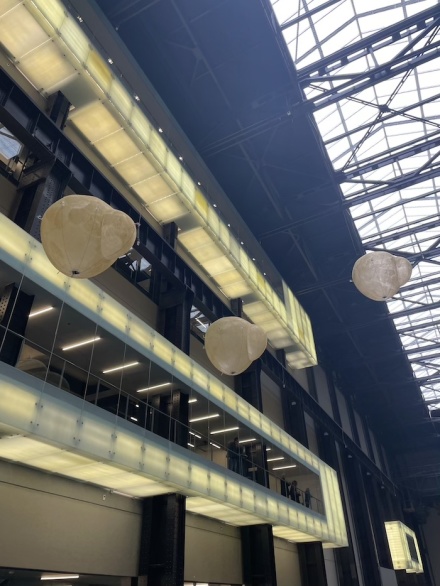
In Love With the World (Installation View)
Two species of “aerobes” inhabit the vast post-industrial space: the globular, hairy “planulae” and the transparent, tentacled “xenojellies.” Simultaneously alien and familiar, reminiscent of sea creatures and fungi, the helium-filled orbs are propelled by rotors throughout the corridor. Reintegrating machinery within Turbine Hall, Yi plays upon the industrial legacy of the space, which once stored the electricity generators of the Bankside Power Station.
The New York-based conceptual artist envisions a future landscape populated by autonomous, evolving machinery: “Could machines develop their own experiences of the world? Could they become independent from humans? Could they exchange intelligence with plants, animals and micro-organisms?”
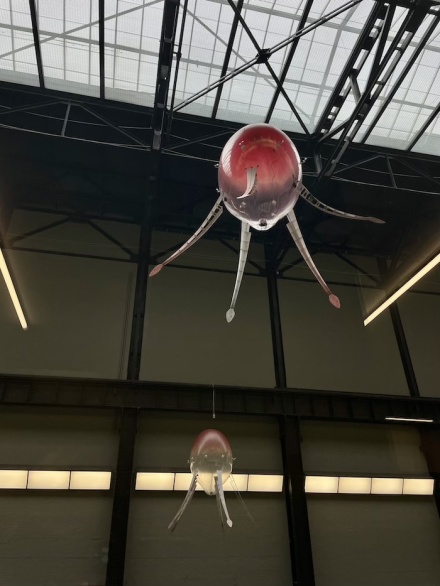
In Love With the World, installation view.

In Love With the World, installation view.
Yi worked with specialists to engineer these unmannged aerial vehicles (UAVs), which are autonomous once in flight. Electronic sensors positioned throughout Turbine Hall feed information to the aerobes, influencing both the individual and collective behavior of the machines over time in response to fluctuations in heat and visitor activity, for example. The Tate Modern exhibition guide underscores the complex, mysterious mechanisms of the aerobes: “Like a bee’s dance or an ant’s scent trail, the aerobes communicate with each other in ways we cannot understand.”
The transparent balloon-like creatures pulsate slowly overhead with the subtle buzz of propellers. The movement of each aerobe is unpredictable and irregular, yet the machines seemingly maintain spatial awareness—drifting close to each other without ever bumping, gravitating toward visitors yet staying just out of reach.
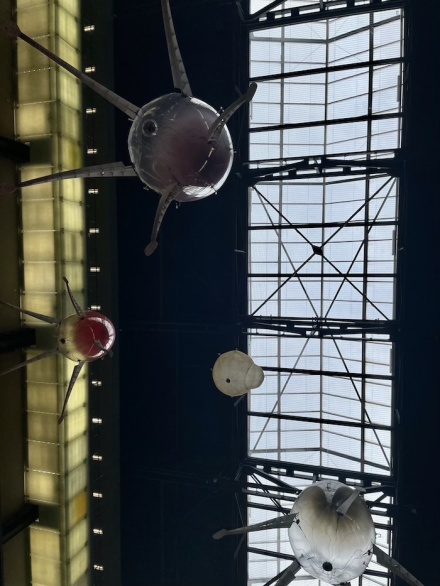
In Love With the World, installation view.
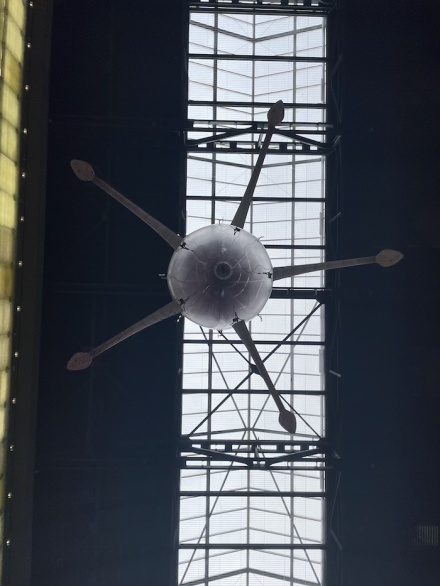
In Love With the World, installation view.
Yi cultivates an immersive experience with an olfactory dimension: her “scentscapes” conjure aromas from bygone eras of the historic Bankside site. Changing each week, the scentscapes might recall the foliage of the Cretaceous age, the ocean life of the Precambrian period or the coal dust of the Industrial Revolution. The subtlety of the smells—perhaps rendered more ambiguous through face masks—prompts heightened awareness of the environment as visitors seek to discern the smells of scentscapes.
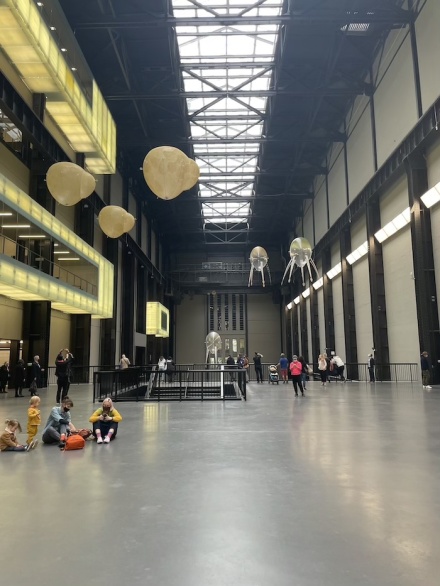
In Love With the World, installation view.
Yi, who explores the intersections of biology and technology throughout her creative practice, imagines the potential for sensorial experience to shape artificial intelligence: “Most AI functions like a mind without a body, but living organisms learn so much about the world through the senses. Knowledge emerging from being a body in the world, engaging with other creatures and environments, is called physical intelligence.”
– A. Chisholm
Read more:
Anicka Yi: In Love With the World [Exhibition Site]



